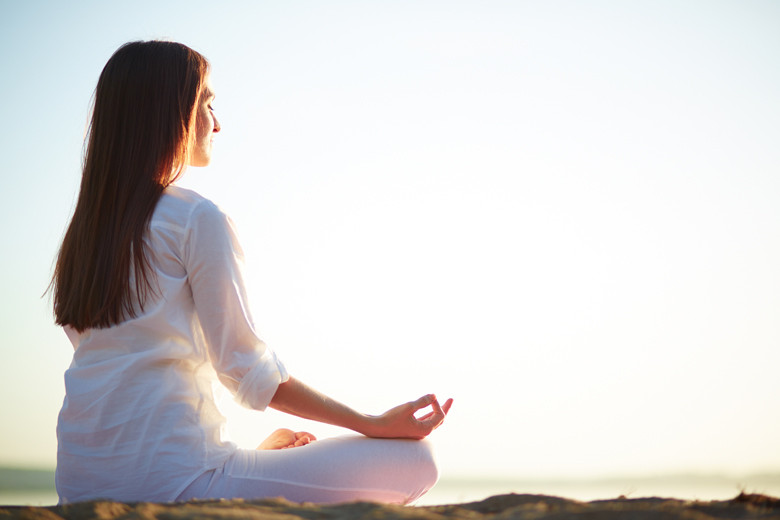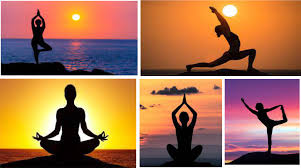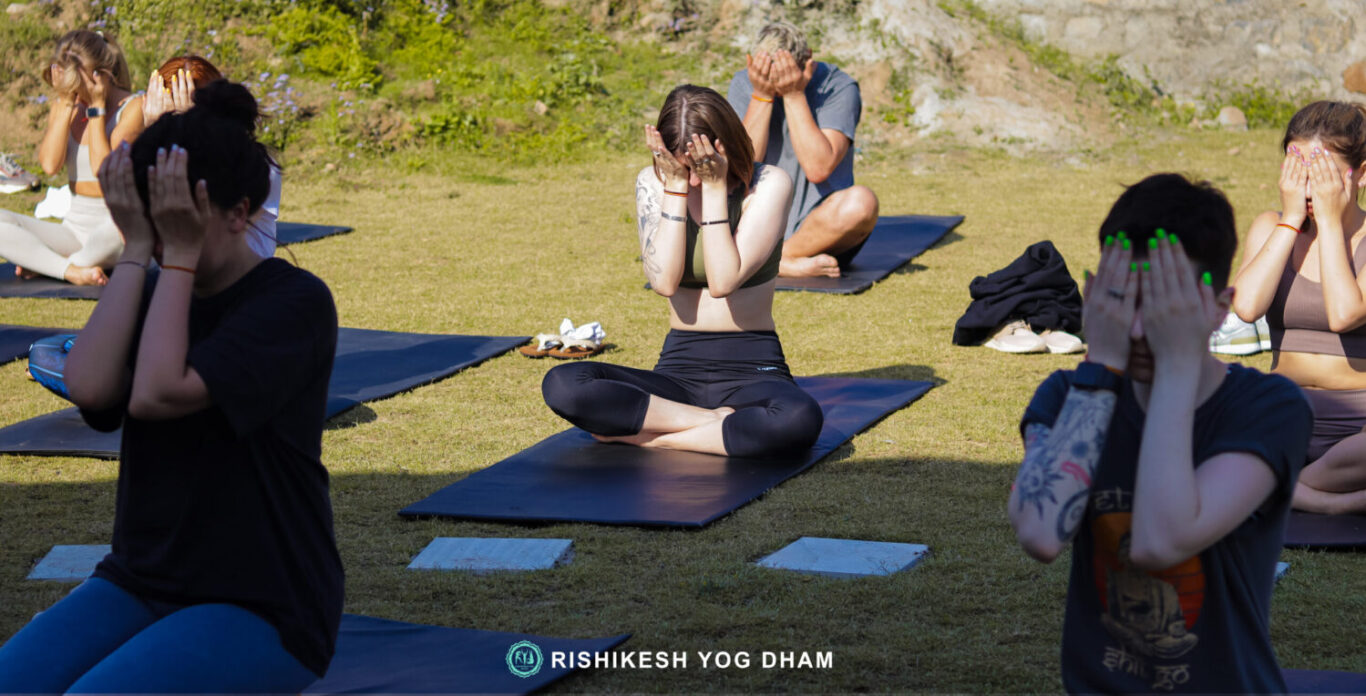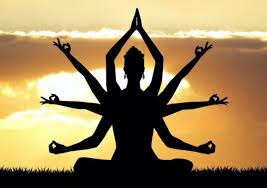Calming the Mind / Meditation & Yoga
In order to understand the mind, it is important to realize that it cannot deal with several things at once. It jumps from one object to the next and can perceive stimuli from the different senses (hearing, seeing, smelling) at great speed. However, this usually happens outside of our awareness. Only when we are completely focused on one thing do we no longer perceive other things.
In such situations, the energy of the mind is concentrated. The mind always works best when it is relaxed. In such situations, one does not notice how time passes or what is happening around oneself. Unfortunately, it is very difficult to calm the mind. Since we often try to do several things at the same time, we become unfocused and the energy is scattered.
One attempt to symbolically describe this state is to imagine a restless horse that keeps straying from the path and the rider cannot gain control. We are helplessly subject to the horse’s will and are therefore unable to reach the goal.
A calm mind, on the other hand, offers the prerequisite to simply perceive things without judging or evaluating them. It is then no longer necessary to form an opinion about everything, but things are simply perceived without commenting on them.
Not everyone has the same prerequisites for calming the mind and thus preparing for meditation. Everyone has to find the individual tools that suit them. Distractions should be eliminated. A Meditation object can be used as an aid for this. This helps to achieve the concentration needed for meditation. A frequently used aid is concentration on the breath. The breaths are counted and disturbing thoughts are only briefly registered before returning to counting the breaths.
Any symbol that is individually helpful can serve as a meditation object. It can be a holy being, a candle or even a tree or an apple. Practicing breathing techniques (pranayama) is a good preparation for concentration. The mind is refreshed by the associated cleansing, and new energy ensures clarity in the body and mind. Only when the consciousness is calm and no longer “jumps back and forth wildly” influenced by the stimuli and sensory impressions from the subconscious can one begin to prepare for concentration and meditation.

In practice:
Find a place where you can relax
Take an upright sitting position in which you can remain for some time
With the help of a meditation object (see above), it is often easier to calm the mind
Try to focus your mind and direct it inward
Focus on the point between the eyebrows
The thoughts initially wander and jump back and forth
Relax deeply into your breathing
Observe the abdominal wall rising and falling with breathing
Be patient to free the mind from emotional chaos
Observe your thoughts without judging them, accept them as part of your life and let them pass
Develop compassion for yourself as you try to explore new spaces
At the beginning of your practice, try to calm your mind for about 10 minutes before starting the concentration exercises.
Concentration / Meditation & Yoga
Concentration can begin when the mind is calmed with the help of asanas and pranayama. Various aids can be used to focus the consciousness on something. The yogi can concentrate on the image of a deity, on a mantra, on light, sounds or energy centers (chakras). The attempt is made to fill the consciousness only with this meditation object.
As a rule, one can spend years doing these concentration exercises and purifying the consciousness. Only then does the actual meditation begin. The difference between concentration and meditation is not so easy to determine.
Only when concentration can be maintained for a longer period of time does it turn into meditation. Complete autonomy of consciousness is achieved through various levels of concentration and meditation. According to ancient yoga scriptures, meditation begins when concentration can be directed on a meditation object for twelve times twelve breaths.
The goal is to experience detachment from the external world and thus freedom from all ties to the world and the desires of the ego. Your own thinking is transformed. The split between the meditation object and the meditator is dissolved. This is the highest level (samadhi), also called contemplation.
In practice :
The lotus position is considered the basic position for concentration exercises and meditation.
Since most people are not prepared for this position, it is often very difficult for inexperienced people to remain in the lotus position for a long time.
It is therefore advisable to choose a variation of the lotus position or to sit on a chair.
A comfortable, stable sitting position is important.
The spine should be upright so that the energy can flow unhindered. Lying down is not advisable as there is an increased risk of falling asleep. The hands are in the chin mudra (index finger and thumb touching) on the knees, or the right hand is held in the cupped left hand.
The breath should flow consciously and relaxed. The temptation to escape into familiar defense mechanisms is often great. It is important to be conscious of the determination before each meditation. It can be a great gain in life to concentrate on the present moment and deviate from the old familiar pattern of daydreaming or escaping the past. To meditate, the mind must be completely concentrated. It is advisable to meditate for around 30 minutes a day. If this is not possible, it is better to meditate for 10 minutes a day instead of 60 minutes once a week.
Yoga & Meditation
Many different types of meditation have the same goal, namely the experience outside of space and time, a state of bliss or contemplation. Christians pray, Buddhists often practice breathing observation, Zen Buddhists puzzle over a koan. In the Teachings of Yoga there are different stages that lead to the goal.
The teachings of Patanjali, who can be seen as the “father of yoga” with his Yoga Sutras, lead the yogis on the eightfold path to enlightenment.
The eight limbs of yoga are:
Yama: Means the attitude towards the environment
Niyama: Attitude towards oneself
Aasana: The Practice of Postures
Praanayama: breathing exercises
Pratyaahara: calming the mind, directing the senses inward
Dhaaranaa: aligning the mind
Dyaana: Concentration and the ability to dwell on an object with the senses
Samaadhi: union with a meditation object. (superconscious state)
There are several prerequisites for a successful yoga meditation practice:
Through correct ethical behavior, the yogi protects himself from disturbing, distracting negative influences and learns to purify his conscience. This also includes non-violence and an appropriate diet. A moral life is seen as a good prerequisite for successfully practicing meditation.
Asanas (body postures) help the body to find balance. They are seen as a good preparation for meditation. The flow of energy in the body can be felt after practice and helps to relax
.Pranayama (breathing) can be seen as the connection between the body postures (asanas) and the mind. With the help of pranayama, the mind is calmed. Distracting thoughts decrease and energy can flow calmly.
Concentration must be able to be directed at one point. To do this, the mind must first be calmed. It is important to “turn inward” in order to escape from the flood of stimuli. The flow of disturbing thoughts must be interrupted.

Type Of Meditation
The Breath Meditation
This method is very suitable for getting started with meditation techniques. The mind can be calmed with the help of breathing. For most people, extending the exhalation has a calming effect. The mind can be influenced with the help of breathing and the energy starts to flow.
To practice:
Find a quiet place where you can take your sitting meditation posture
It is important that the spine is upright.
Breathe through your nose in a natural breathing rhythm
Observe the rise and fall of the abdomen in the rhythm of the breath
Close your eyes and concentrate on the point between your eyebrows.
Breathe in and out and count after each breath until you reach 10
Repeat this 3 times
When your mind wanders, you can comment on your breathing: “I breathe in” and “I breathe out.” This can sometimes make it easier to concentrate.
When you first start meditating, it is often very difficult to focus your mind on your breath. This is easier to accept when you realize how many different influences the mind is exposed to. Patience is a good prerequisite for meditation.
Read More :
[Meditation before bed] Guides relaxation, helps sleep, and removes negative energy, creating an endless cycle of life!
[Morning Meditation] Morning rituals and gratitude meditation will help you get up in the morning with full energy!(Benefits of Yoga) More and more yoga teachers have serious hip joint problems! ? Is yoga good?
The Walking Meditation
Walking meditation can be practiced in a room or in nature. The steps are connected to the breath. You should have peace, time and curiosity to engage in this experience. In keeping with this, you should be aware that “the path is the destination”, because the experience of walking is important, not arriving at a destination.
On the practice:
Focus on your breathing
Start slowly moving your foot in the step direction
Walk mindfully and observe how the heel touches the ground, the sole of the foot and the toes
Take slow steps and pay attention to how often you breathe in and out
First try walking for 10 minutes, then increase the time
Walking meditation is a suitable option for people who want to calm the mind but reject the sitting position because they perform many sedentary activities in their daily lives.


